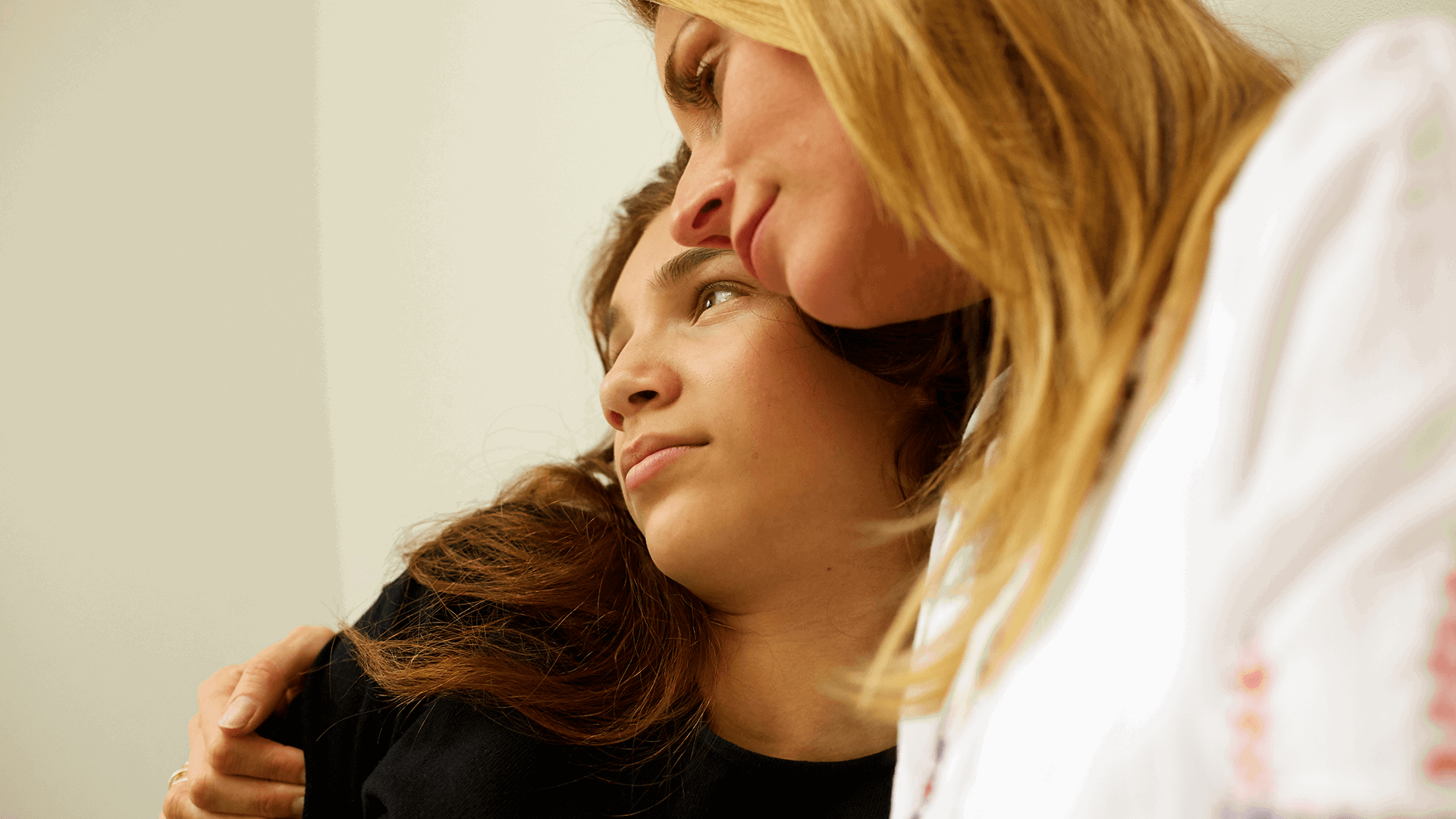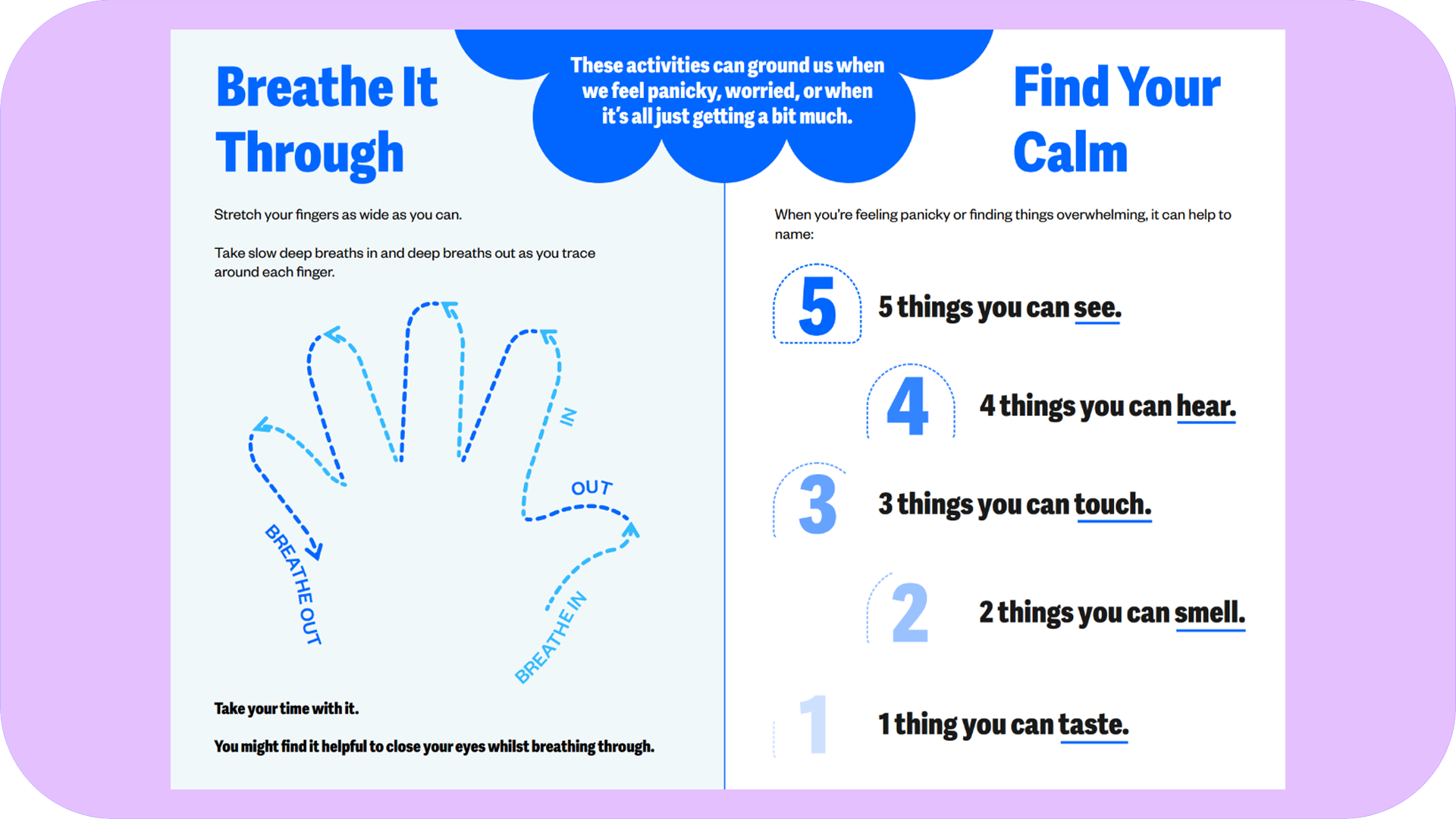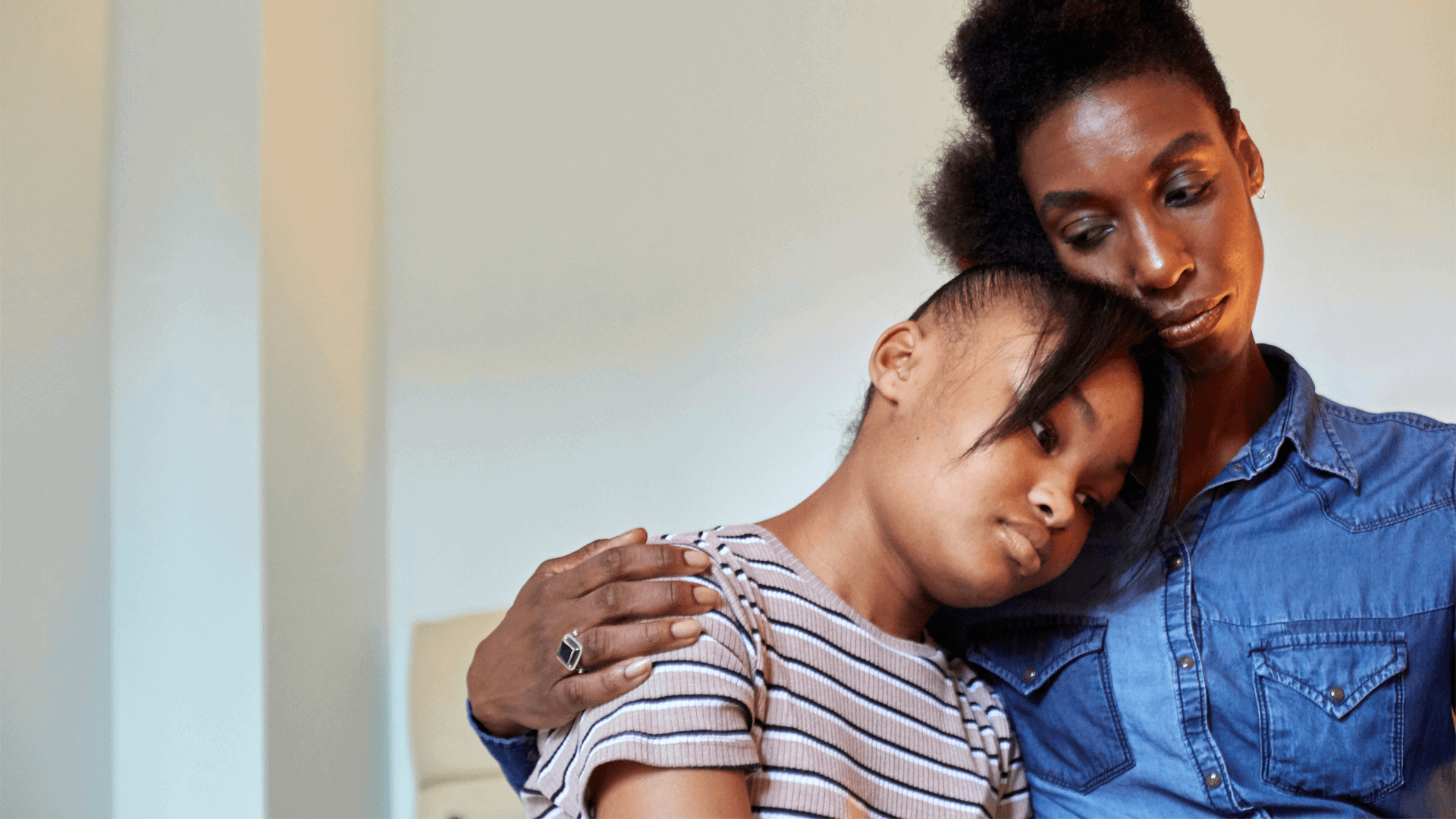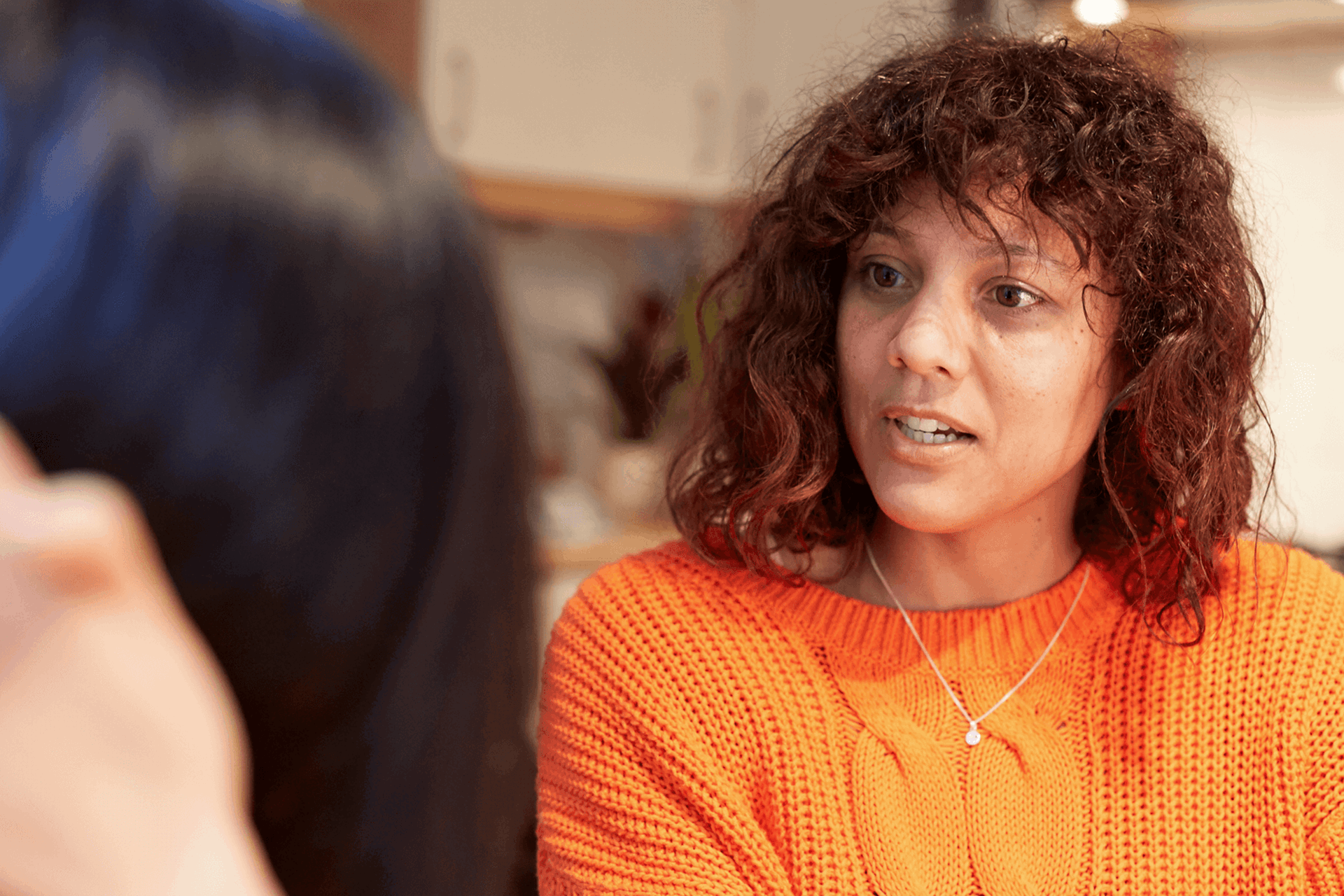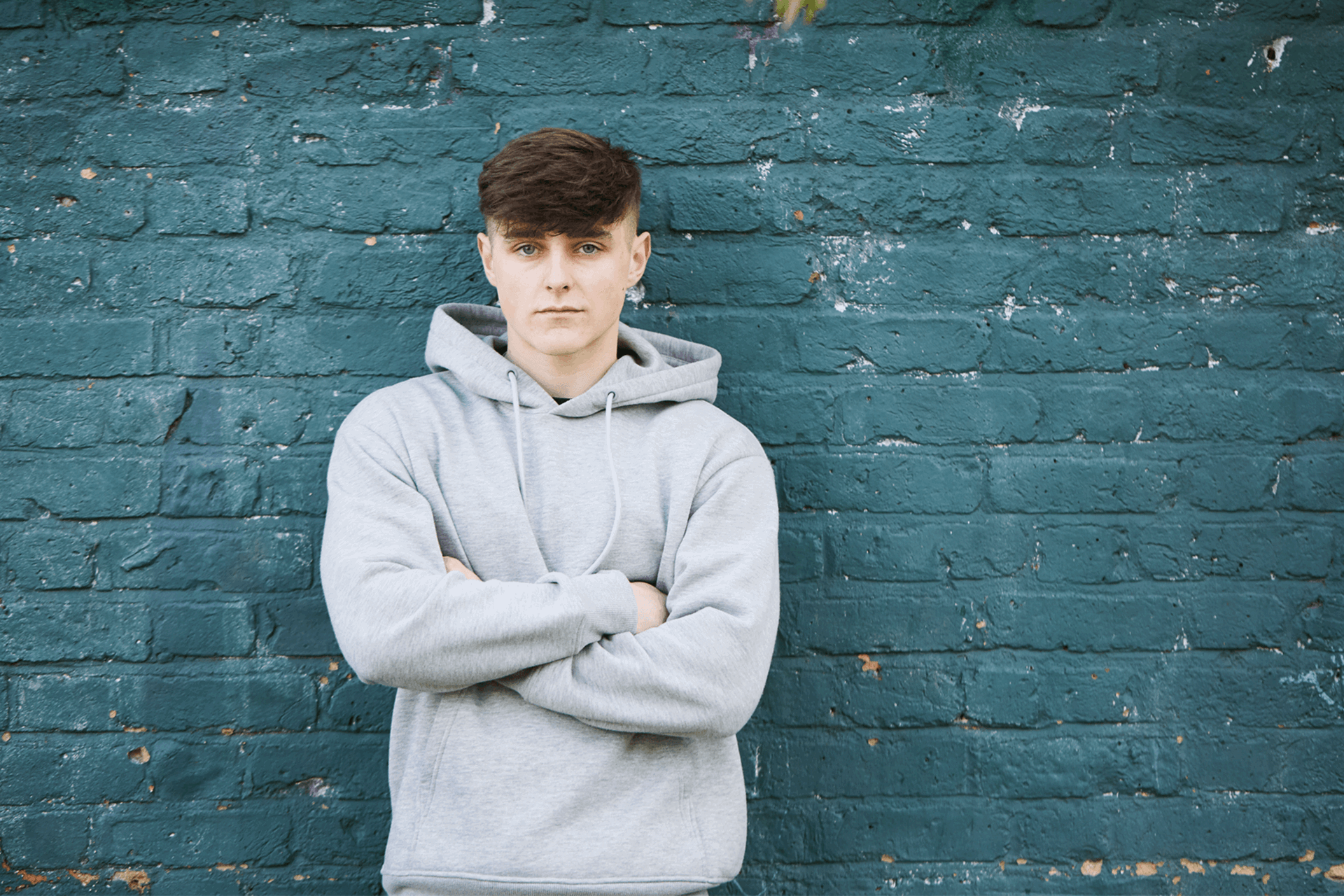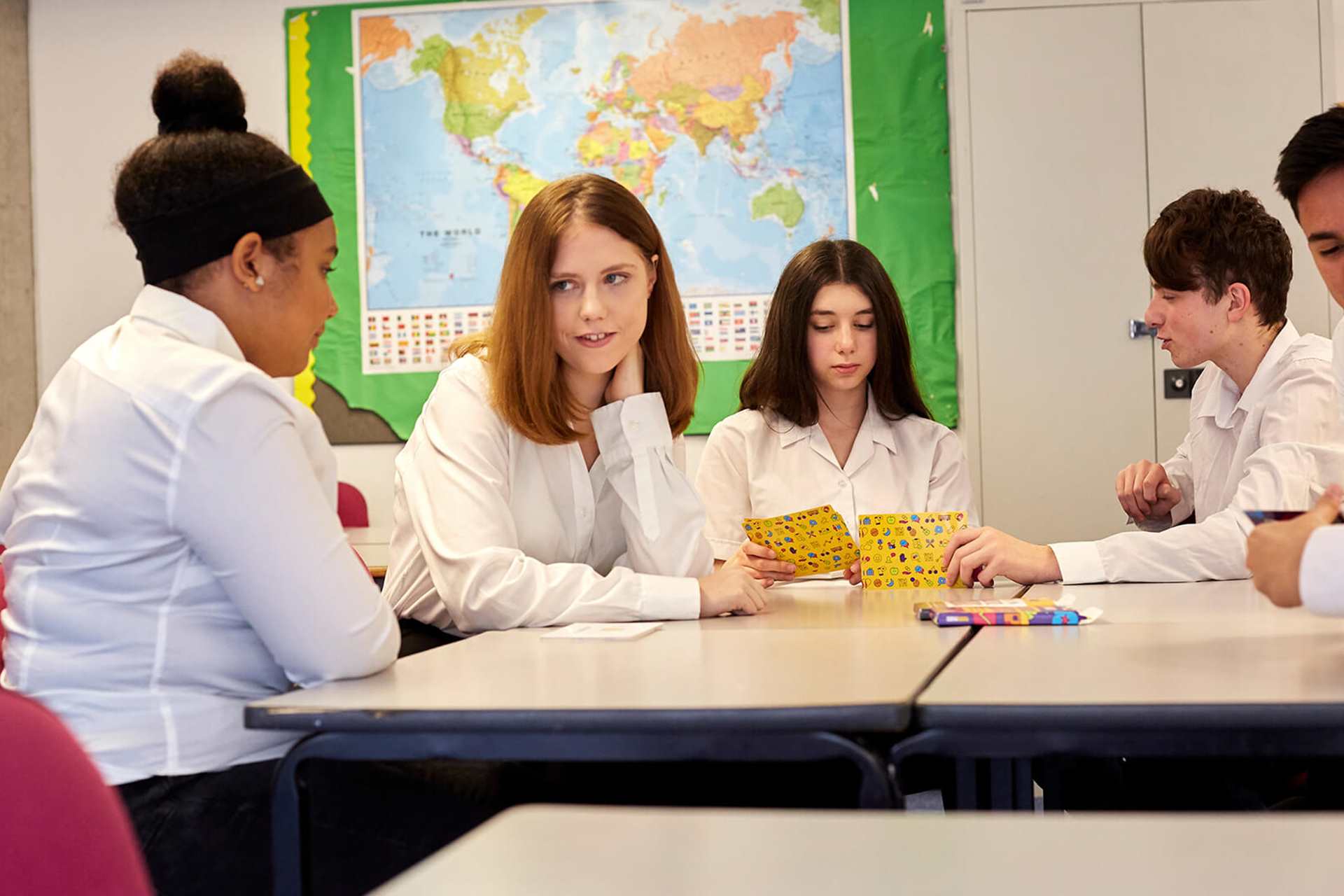What is anxiety?
Anxiety is a feeling of worry, fear or unease. It is often experienced as a combination of thoughts, feelings and physical sensations in our body.
All children and young people feel worried sometimes. This is a normal, human reaction to things that feel stressful. For example, before an exam a young person may feel more worried than usual. But they will soon feel calmer after the stressful event has passed.
Anxiety becomes a problem when a child or young person feels stuck in it. When this happens, it can become an overwhelming experience. It can also affect their daily life and limit the things they feel able to do.
If your child or young person is struggling with anxiety, there are things you can do to help them. We’ve got advice to help you provide reassuring support, work on strategies together and find professional help if they need it.
What makes young people anxious?
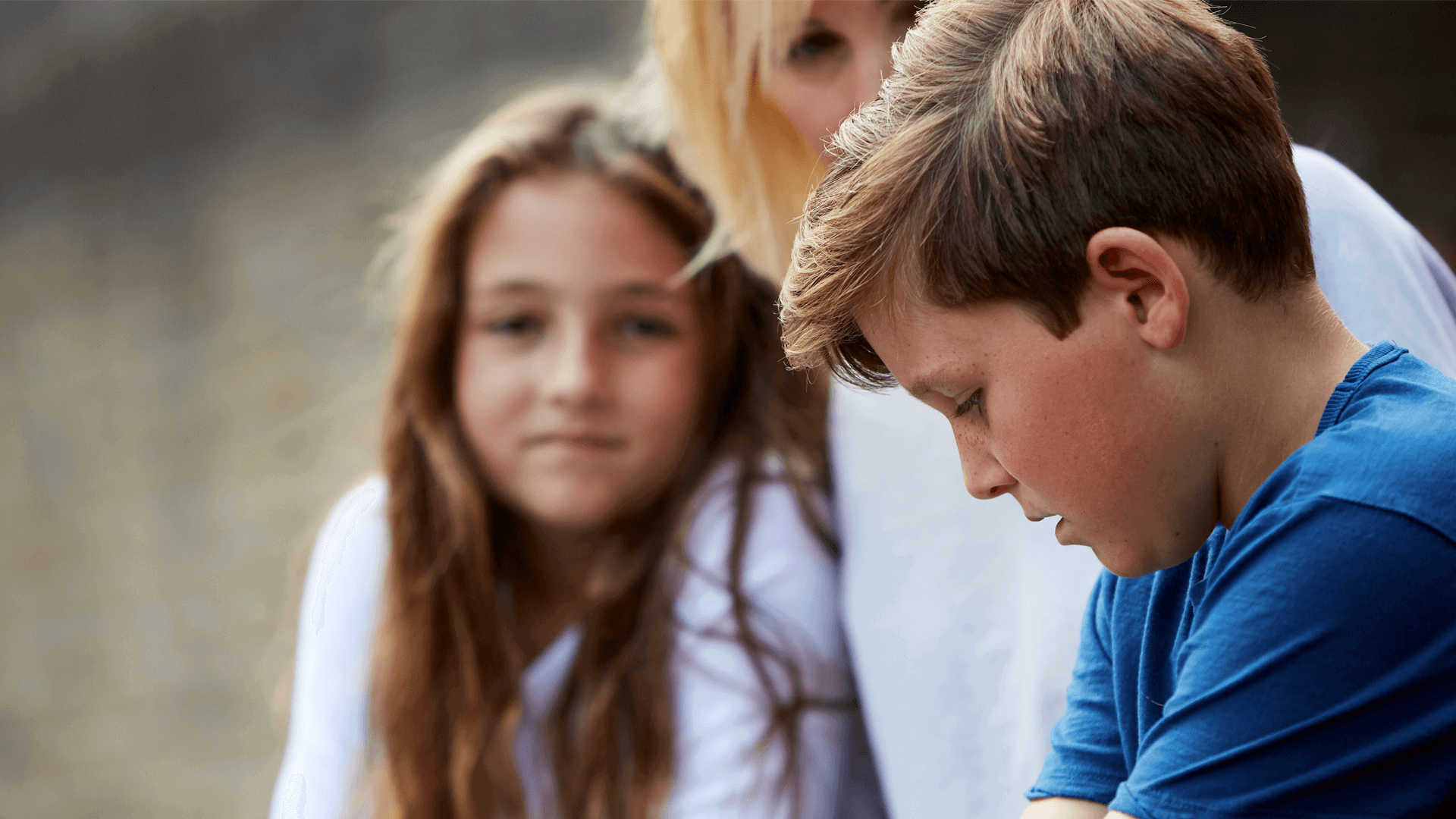
A child or young person may be anxious for different reasons. Feeling a bit more worried sometimes is normal and there is not always a clear reason for this. But if your child is feeling unmanageable amounts of anxiety, this is often a sign that something in their life isn’t quite right. They may need support to work out what the problem is.
This video by St Catherine's College is a useful way of understanding how stress and anxiety might build up in a person's life.
The following kinds of things can make some children and young people feel anxious:
- finding school difficult or experiencing school anxiety
- being around someone else who is very anxious, such as a parent
- going through a significant change, such as moving house, parents separating or changing school
- the death or illness of a close family member or friend
- having lots of responsibility, for example caring for other people in their family
- experiencing family stress around things like housing, money and debt
- going through experiences in which they do not feel safe, such as being bullied, witnessing or experiencing abuse, or experiencing discrimination such as racism, homophobia or transphobia
- not getting the right support or having their needs recognised if they have a neurodiverse condition such as autism or ADHD
Signs of anxiety in children and young people
Anxiety often affects our body, thoughts, feelings and behaviour. A child or young person who is struggling with anxiety may also behave differently or start using coping mechanisms to try to manage or avoid the anxiety. Below are some of the signs to look out for in children and young people.
- feeling sick
- feeling tense, fidgety or restless
- feeling hot or sweaty
- taking short, shallow breaths
- feeling shaky – for example, like you have wobbly legs
- having trouble sleeping
- finding it difficult to concentrate
- feeling more sensitive to noises, smells or sights around you
- having diarrhoea or needing to pee more than usual
- having panic attacks, which can include a racing heart, breathing very quickly and feeling unable to breathe
- preoccupied by upsetting, scary or negative thoughts
- worrying a lot about things that may happen in the future
- worrying about not being able to cope with daily things like school and friendships
- nervous, on edge, panicky or frightened
- overwhelmed or out of control
- full of dread or an impending sense of doom
- withdrawing or isolating themselves – including not wanting to go to school or be away from parents or carers (sometimes called 'separation anxiety')
- avoiding social situations (sometimes called 'social anxiety')
- being more irritable or angry, or acting out
- repeating certain behaviours, actions or rituals, or repetitively seeking reassurance (this can be a sign of an anxiety-related condition called Obsessive-Compulsive Disorder or OCD
- eating more or less than usual
- self-harming
How to help your child or young person when they feel panicky
In a very anxious moment, your child or young person may feel frightened or worried about having a panic attack. If this happens, focus on helping them to calm down and feel safe. The strategies below can help.
Remember, you don’t need to do all of these things each time. Everyone is different, and it’s about figuring out which of these strategies suits them best. After they have calmed down, it can help to remind them that the panicky feeling did not last forever. They were able to do things that helped and the feeling stopped.
Breathe it through
Together, hold your hands out in front of you. Trace the outline of each of your fingers slowly with your other hand. Breathe in as you go up each finger, and out as you come down. Move and breathe as slowly as feels comfortable. Over time, encourage your child or young person to breathe out for one or two counts longer than they breathe in. This can help their body to relax.
If you would like to have a copy of this technique with you, you can download and print our resource.
Find your calm
Connecting with what we can see, touch, hear, smell and taste is sometimes called ‘grounding’. Doing grounding techniques can make us feel more present and bring us back into our body. This can reduce the intensity of our anxiety. Think together about what they can see, touch, hear, smell and taste.
For example, they might notice: five different colours; four soft things in the room; three sounds like cars going past the window or the noise of the washing machine; two things they can smell, like a scented candle or a piece of fruit; and one thing they find soothing to eat.
Feeling you nearby can be soothing. If it helps, hold their hand or put your arm around them. If this is too much, just sit near them. Reassure them that the anxiety will pass and they will be okay. It can help to describe it as a wave that they can ride or surf with your support until it peaks, breaks and gets smaller.
If you haven’t tried this before, agree when they’re feeling calm what this is. It could be their bedroom, a favourite place in nature or somewhere they’ve been on holiday. Sometimes holding a memento of a relaxing place, like a seashell or pebble, can help.
This could be running, walking, listening to music, painting, drawing or colouring-in, writing in a journal, watching a favourite film or reading a favourite book.
How to help your child or young person manage their anxiety
As well as managing panicky moments, your child or young person can also learn how to deal with their anxiety over the longer-term.
Many of these strategies are about helping them to understand how their anxiety works and what helps them. The more confident they feel about this, the more they will believe in their ability to cope. This can make anxiety feel more manageable.
As you think about strategies you might try, always remind yourself you’re doing your best. It’s natural to feel a bit overwhelmed sometimes. But remember, you do not need to try five different things at once. Have a look through these suggestions and pick one or two things you think might help.
Ask them what it feels like in their mind and body. When they share something, remember to let them know their feelings are understandable. It can be tempting to dismiss or ‘fix’ their worries because you want to reassure them. But feeling listened to and understood can help them relax. You can find more tips on making your child feel really listened to in our blog.
What this could look like in real life: With a younger child, you could draw a stick person and ask them to add pictures to show you what their anxiety feels like. A teenager might like to make a mind map. They can put ‘anxiety’ in the middle of a page and write words around it that describe their experience.
I felt that we lost the idea that it’s important to validate their feelings rather than dismiss them. But I think this is a really important point that we shouldn’t lose

This could include a relationship, schoolwork or a combination of things. Are there changes that could be made at home or school that would make things easier?
What this could look like in real life: Ask them if they would like to do a ‘stress bucket’ activity with you. This lets them write down the things that make them feel anxious, and also the things that help.
Watch this video by St Catherine's College together first, which explains what the 'stress bucket' is. Then try doing our 'stress bucket activity', which you can download and print from our website. Work on it together, or encourage them to do it by themselves if they would prefer.
Anxiety might make them feel sick or make their heart race. If they can recognise these signs, they will know when they need to ask for help or do something to help themselves.
What this could look like in real life: Draw a stick person on a page. Then ask them to add pictures or words for the things that happen to their body when they’re getting anxious. Try to show you’re interested, curious and accepting about whatever they share.
In a calm moment, encourage them to write down a list of activities that help them feel better.
What this could look like in real life
Your child or young person could try:
- doing exercise or going for a walk
- using a fidget toy
- making something like a puzzle or lego
- drawing or painting
- writing in a journal
- watching a favourite film
- talking to friends
- cooking or baking
I’ve found it helpful when talking about anxiety to think about achievable goals for overcoming worries that stop them from doing things, and then to create stages like a ladder to get to them.
This could be yoga, meditation, mindful colouring or something else. Remember that some people find these activities more helpful than others. Encourage your child or young person to decide what works for them.
What this could look like in real life: Teenagers might like to use a mindfulness or meditation app such as Headspace or Calm.
For younger children, you might be able to find guided meditations or relaxing music online. If you want to try one of these, check it out yourself before using it with them.
No, [yoga] didn’t fix the underlying issues (CAMHS did eventually). But it did give my daughter valuable coping strategies while waiting for her CAMHS appointment. Strategies that helped her to cope with trauma, anxiety and help her heal. She began practising yoga regularly and meditating in the evening; it made a huge difference.
They might find it helpful to write down their worries and put them in a worry box. This gives them a physical place where their worries can be ‘held’.
Or they might prefer to make a self-soothe box. This is something they can fill with items that help them when they feel anxious.
You can use our guide to making a worry box, or watch the video below to find out how to make a self-soothe box.
There are some daily activities that are really important for our mental health. These are:
- physical exercise, or some movement
- sleeping well
- eating healthily
- drinking water
- connecting and spending quality time with loved ones
They might sound simple, but they can have a big effect on our mood. Regular exercise can be particularly important because it can help to reduce feelings of anxiety in the body. It doesn’t have to be much – walking or gentle yoga can help.
If you have a teenager or young adult, reducing alcohol and caffeinated drinks such as coffee can help. This is because they can trigger the physical symptoms of anxiety.
You can help your child take their mind off their worries by having fun together and talking about other things.
What this could look like in real life: Try something that requires lots of focus. This can help to keep our mind on the present moment. You could play sport or a musical instrument, or do something creative like sewing.
Some children and young people will need support from a mental health professional. They may benefit from a specific diagnosis or a treatment such as talking therapy. You can find more information about this below.
Young people tell us it also helps to ...
- think about something you’re looking forward to
- imagine your thoughts leaving your brain and floating off into the sky
- keep yourself occupied
- have time out
- reflect on how you’re feeling
- talk to other people you trust
- remind yourself you’re not alone – odds are someone in your friendship circle has anxiety or depression too
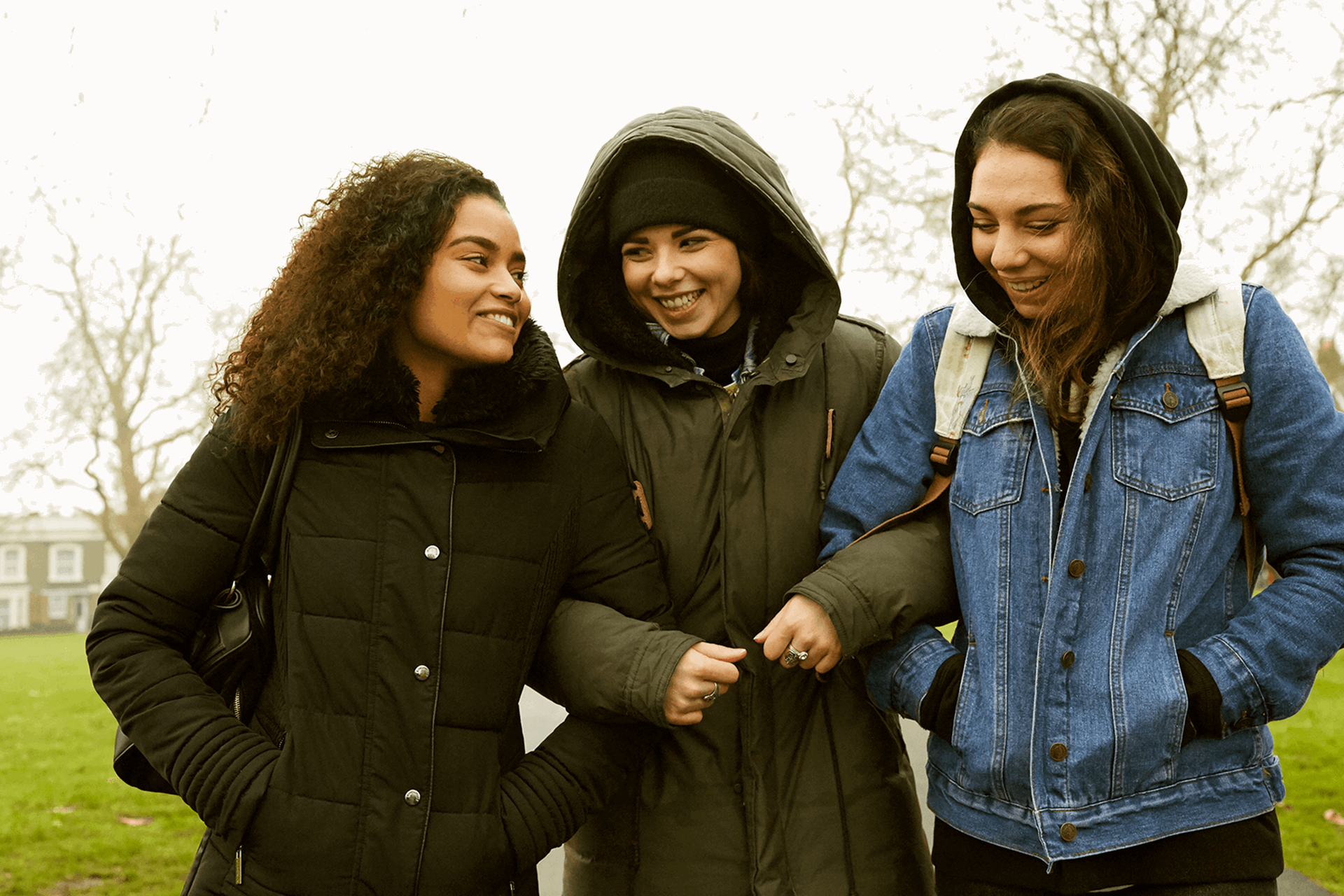
Finding professional help
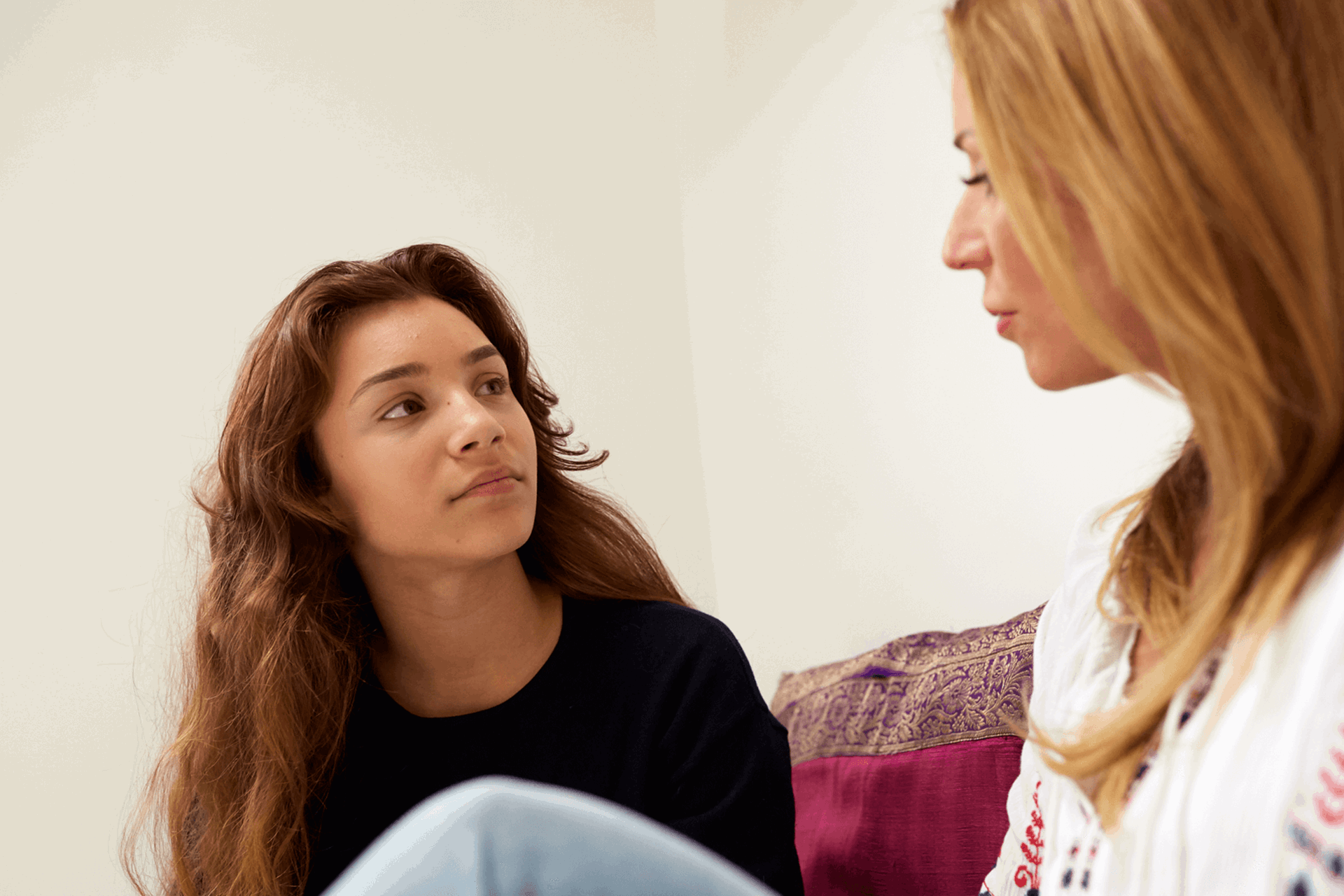
Your GP can find out more about how your child or young person is feeling, and suggest things that might help. They can also let you know about local services that can provide support.
If your child or young person’s anxiety is more severe, the GP can make a referral to the NHS service for children and young people’s mental health. This is called CAMHS.
If they are referred, the type of support they are offered will depend on their age and experience.
- Cognitive Behavioural Therapy (CBT) may be offered to help your child understand their thoughts and feelings. CBT can also support them to find practical strategies that help them cope.
- Medication may be offered if your child or young person’s anxiety is very difficult to manage and talking therapy has not helped. Medication should only be suggested by a doctor who specialises in children and young people’s mental health. It should also be offered alongside talking therapies or another psychological treatment. You can find more information on some of the medications used to treat anxiety in our guide for young people.
You can find out more about speaking to the GP in our guide for parents and carers.
Counsellors and therapists can provide emotional support and help your child or young person to make sense of their feelings. They can also work with them to find things that help them cope. Therapists working with younger children will usually do this through play and arts activities such as painting, drawing and making things.
You can find out how your child or young person can access counselling or therapy in our guide for parents and carers.
If your child is struggling, it can help tell their school about what’s going on and what support they need. Depending on their age, it may be important to make sure your child feels some control over the information that’s shared about them. Ask them if there is someone who they would feel comfortable for you to speak to.
Alongside counselling, schools can often provide things like:
• support from the pastoral team
• mentoring
• peer buddying
• clubs and activities
If your child is feeling anxious about school at the moment, have a look at our guide for parents and carers.
You might also find helpful...
Useful helplines and websites
While we take care to ensure that the organisations we signpost to provide high quality information and advice, we cannot take responsibility for any specific pieces of advice they may offer. We encourage parents and carers to always explore the website of a linked service or organisation to understand who they are and what support they offer before engaging with them.
-
YoungMinds Parents Helpline
We support parents and carers who are concerned about their child or young person's mental health. Our Parents Helpline provides detailed advice and information, emotional support and signposting.
You can speak to us over the phone or chat to us online.
You can speak to us over webchat between 9.30am and 4pm from Monday-Friday. When we’re closed, you can still leave us a message in the chat. We’ll reply to you by email in 3-5 working days.
- Opening times:
- 9.30am-4pm, Monday-Friday
-
Anxiety UK
Provides information, support and advice for anyone struggling with anxiety. Please note that this organisation offers paid-for services, including therapy and an advice line.
- Opening times:
- 10.30am-4.30pm, Monday-Friday
-
Parenting Mental Health
Digital support community and charity offering information, peer support, facilitated listening circles, mentoring and courses for parents of children with mental health difficulties.
Founder Suzanne Alderson’s book Never Let Go - How to Parent Your Child Through Mental Illness (Penguin, 2020) outlines how she supported her daughter to recovery after she became depressed and suicidal.
-
No Panic
Supports people struggling with panic attacks, phobias, obsessive compulsive disorder (OCD) and other anxiety-related issues - and provides support and information for their carers.
Call 01952 680835 for a recorded breathing exercise to help you through a panic attack (available 24/7).
- Opening times:
- 10am - 10pm, 365 days a year
-
Triumph Over Phobia (Top UK)
Runs a network of local self-help groups for anyone aged 16+ who has a phobia, OCD or an anxiety disorder.
-
Youth Access
Provides information about local counselling and advice services for young people aged 11-25.
Put in your location and what you need help with into their 'Find help' search, and see what services are available in your area.
-
Black Minds Matter
Connects Black individuals and families with free professional mental health services across the UK.
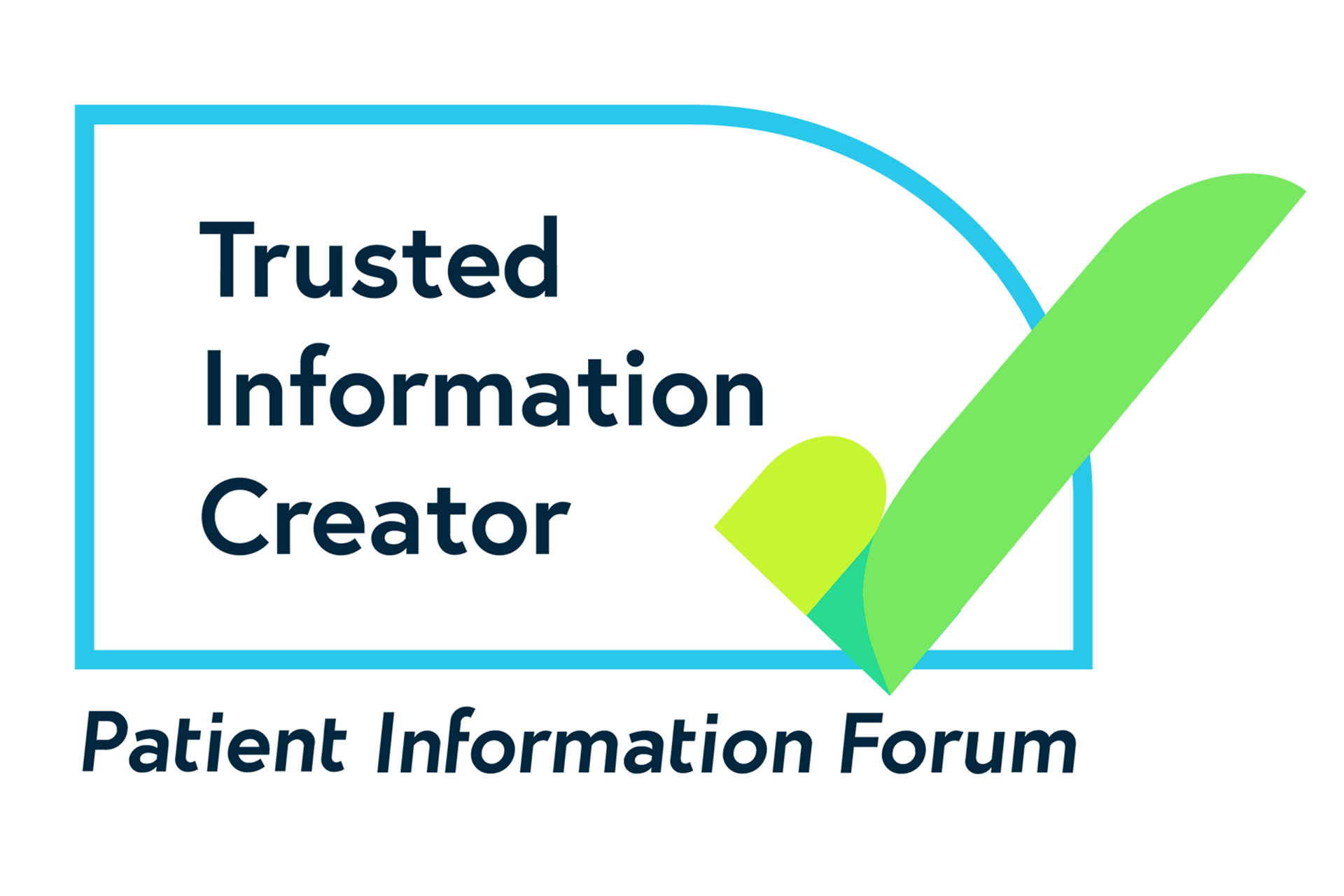
This page was reviewed in November 2023.
It was created with a parent or carer with lived experience of supporting their child or young person with anxiety.
We will next review the page in 2026.
YoungMinds is a proud member of PIF TICK – the UK's quality mark for trusted health information.
Whether you love the page or think something is missing, we appreciate your feedback. It all helps us to support more young people with their mental health.
Please be aware that this form isn’t a mental health support service. If your child is in crisis right now and you want to talk to someone urgently, find out who to contact on our urgent help page.
At YoungMinds we take your privacy seriously. If you’d like to read more about how we keep the information we collect safe, take a look at our privacy policy.
